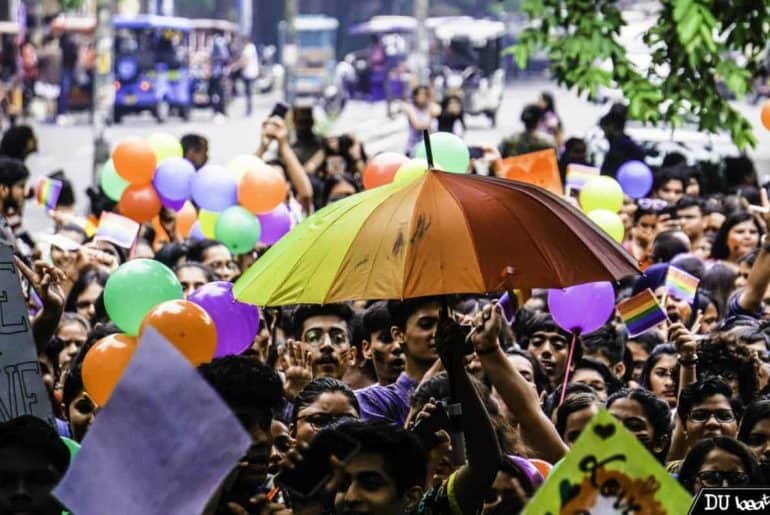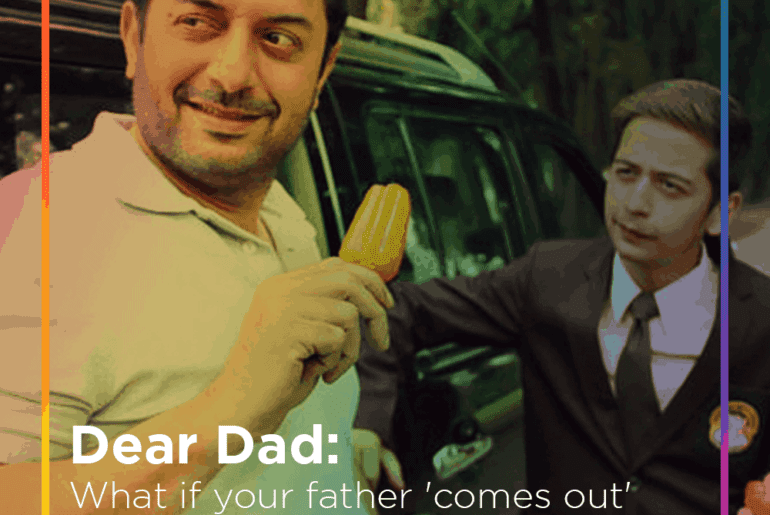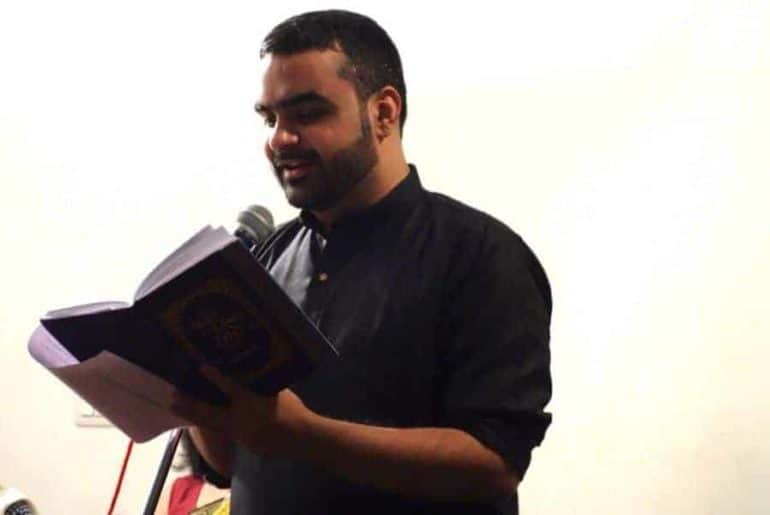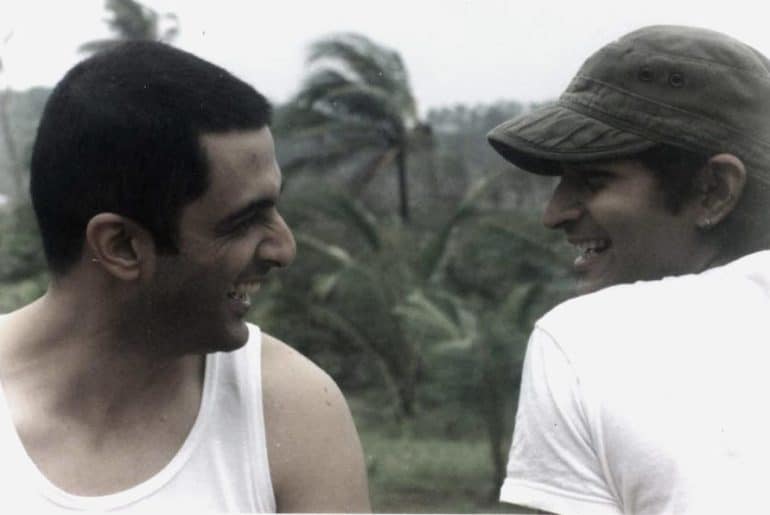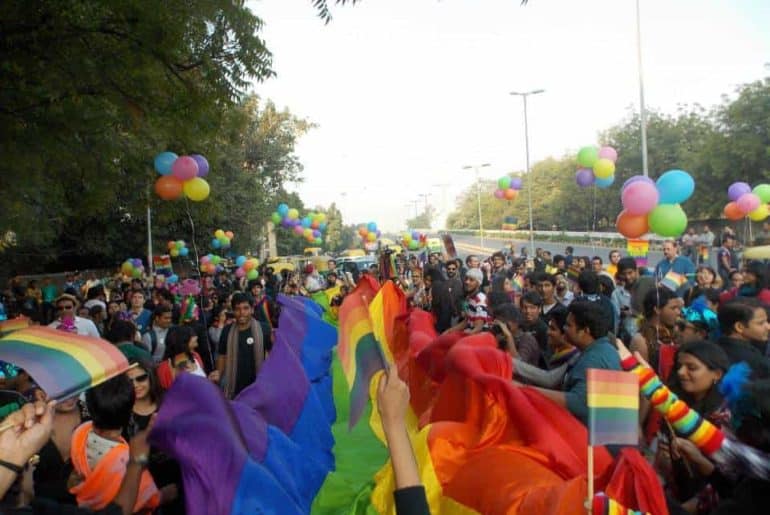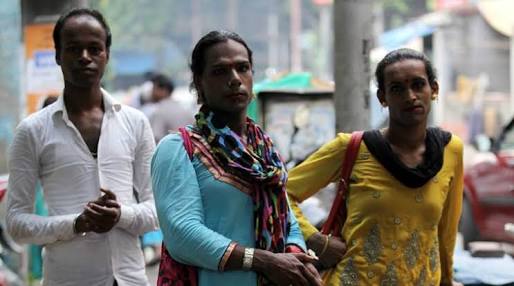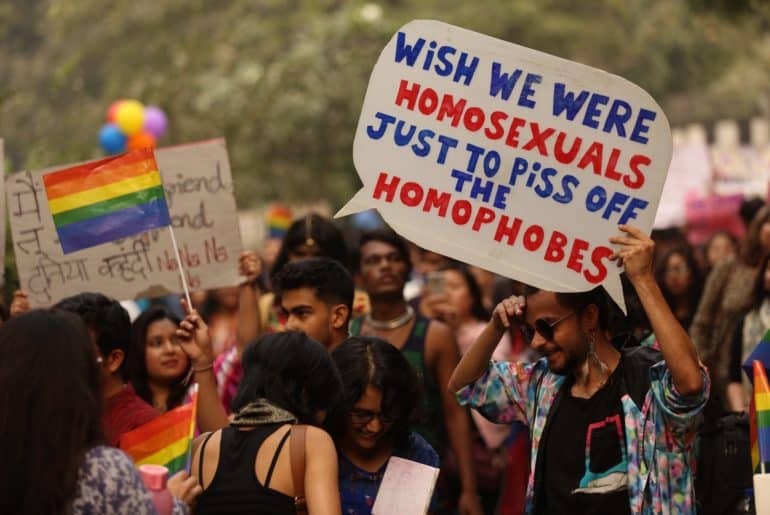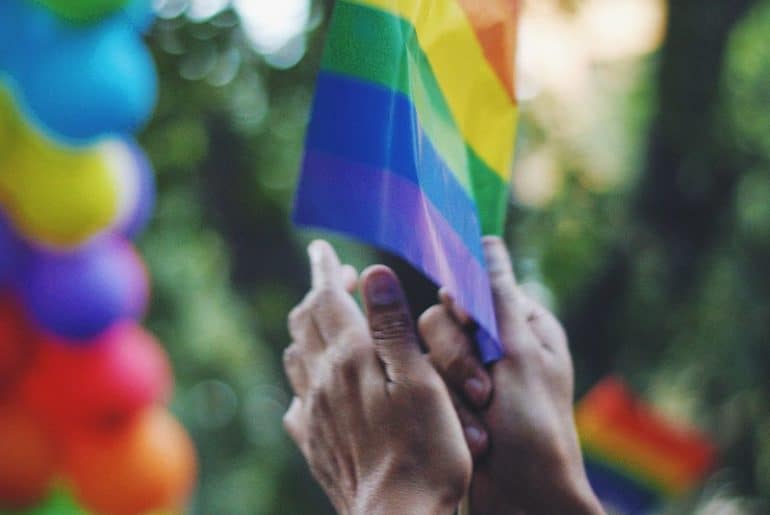On 3rd August 2019, the University of Delhi (DU) witnessed one of its most vibrant pride marches ever in the North Campus, starting from the hostel of Hansraj College, till the office of the University’s Vice Chancellor.
On Saturday, Project CLAP organised the DU Pride March, as a celebration of fifty years of pride. The march was inaugurated with a performance by the Western music society of Sri Guru Nanak Dev Khalsa College.
Members and allies were seen with face paints, flags, and posters. The event began with an introduction by the members of CLAP, followed by a Bollywood mashup rendition. Rishi Raj Vyas, a famous queer activist, addressed the parade and spoke about the repeated suppression of the community’s gender identities and sexual orientations.
Chants of “prem che, prem che, tharo maro same che” (your love and my love are all the same), and those of “Aazadi!” (freedom) from homophobia.
When asked what Pride meant to them, a member of the community commented, “For me, pride is being proud of who I am and finally accepting myself, it feels like I have a place where I belong.” Another supporter who was attending their first-ever pride march felt relieved to be a part of the event.
Arshia (name changed), a student at Lady Shri Ram College and a part of the community, remarked about how homophobic the Indian society is, how members are constantly subjected to violence just for showing love, and how pride representation was important.
With the marchers getting down to the tunes of the dhol, each step drew more traction and support. The event drew to a conclusion with an open-mic where few enthusiastic members and supporters took to the mic and performed for spectators with a vow to promote awareness and break the shackles which restrict people to love freely. “Pride is a day to showcase yourself as freely as possible, and to ask more and more people to support you. So it’s more of a supportive act than being proud of yourself, because we’re proud of ourselves every day,” a member of the community remarked.
Feature Image Credits: Bhagyashree Chatterjee for DU Beat
Shreya Juyal
Anandi Sen

